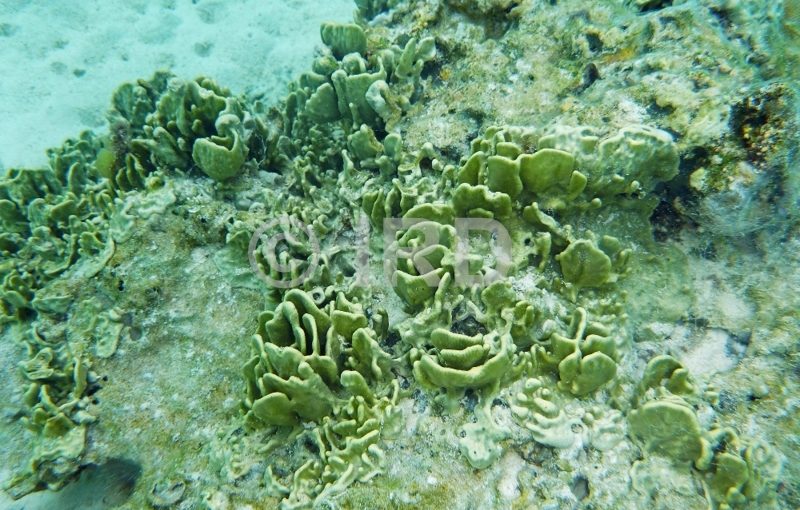External characters
Ranging from thinly encrusting following contours of the substrate, sometimes with surface convulted, often with erect flat lobate lamellae, or sometimes with bifurcate digitate projections, both up to several cm long and extending a long distance from surface. Margins relatively thick, not crenulated.
Dimensions
Fill here
Colour
Variable in situ, possibly depending on growth form and light regime, ranging from pale bluish grey, mauve grey, pale mauve, pale green, yellowish green, light brown to orange brown. Brownish grey in ethanol.
Skeletal Characters
| Oscules | Oscules subterminal and on later sides of digits, 2-5mm diameter, slightly raised above the surface. |
| Texture | Soft, encrusting plates peel off the substrate easily, whereas digits and lobes more rubbery. |
| Surface ornamentation | Thinly encrusting plates with ‘goose-flesh’ microconules, with the subdermal aquiferous canals visible below the surface converging on oscules. Erect lobate and digitate growth forms evenly goose flesh, often fused with adjacent digits. No obvious ridges or grooves although microconules are sometimes aligned in rows to produce a slightly striated appearance. Points of digits usually rounded, and digits generally flattened laterally. Microconules up to 2mm high, completely covering all surfaces although less abundant on the encrusting base than on digits. |
| Ectosomal skeleton | Thick arenaceous layer on surface, with fibres approaching the surface (150-(341.6)-500um thick). Exopinacoderm thick, with spherical cells (4-(5.6)-8um thick) in 2- 3 layers underlying the flattened pinacocytes, 11-(10.3)-16um thick, below which is a smooth collagenous region containing abundant symbiotic bacteria scattered evenly. Ectosomal region 26-(34.6)-41um thick. Subectosomal region cavernous, with well developed subsurface aquiferous system clearly evident. Ascending fibres protrude through ectosome, with areas between conules relatively free of detritus. |
| Choanosomal skeleton | No distinction between primary and secondary spongin fibres, forming very regular reticulation. Fibre diameter approximately 50-(78.8)-100um, with round to rectangular fibre meshes, close-meshed reticulation 130-(188.3)-250um diameter. All fibres are fully cored with sand grains and debris. Fibres only lightly invested with collagen, apparently lacking striated spongin or fibre laminations. Mesohyl moderately light with little detritus outside fibres. |
Ecology and habitat
Mostly in the lagoon, on the inner reef barrier slope or on the pinnacles.
Distribution
In French Polynesia: Society islands
Hooper, J.N.A. (2012). QM0003 Lamellodysidea herbacea In: Hall, K.A. & Hooper, J.N.A. (2014) SpongeMaps: an online community for taxonomy and identification of sponges. (Available at http://www.spongemaps.org).

